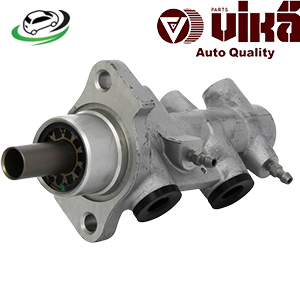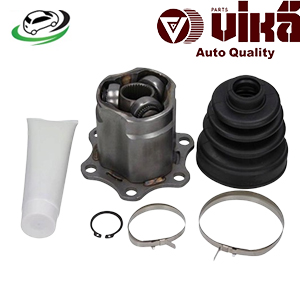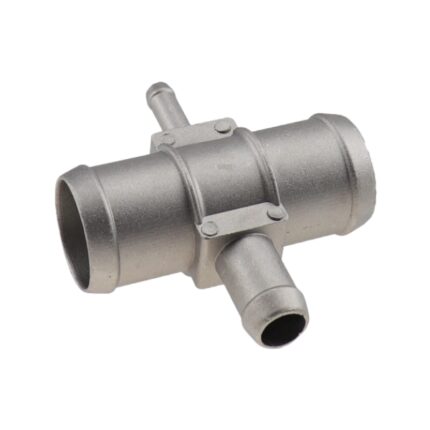Get VW Passat B6 (3C2) Coolant Flange 1K0121087E in Kenya
A coolant flange is a mechanical fitting used in the automotive cooling system to connect coolant hoses to the engine, radiator, or other components. These flanges are typically made from durable materials, such as aluminum or plastic, and are designed to withstand the high temperatures and pressures present in the cooling system.
Coolant flanges may include built-in gaskets or seals to prevent coolant leaks and ensure a tight fit. They are essential for maintaining proper coolant flow, which is vital for regulating engine temperature and preventing overheating.
2. Functions of the Coolant Flange
The primary functions of the coolant flange include:
2.1. Connecting Coolant Hoses
Coolant flanges serve as connection points for hoses that transport coolant to and from various engine components. This includes the water pump, thermostat, radiator, and engine block. By providing secure connections, flanges help ensure that coolant circulates effectively throughout the cooling system.
2.2. Facilitating Coolant Flow
The design of the coolant flange allows for efficient coolant flow. Properly functioning flanges enable the coolant to travel to the engine and return to the radiator, where it can be cooled before being recirculated. This flow is crucial for maintaining optimal engine temperature.
2.3. Preventing Leaks
With integrated gaskets or seals, coolant flanges help prevent coolant leaks at connection points. A secure seal is essential for maintaining pressure within the cooling system and preventing fluid loss, which can lead to engine overheating and damage.
2.4. Supporting System Pressure
Coolant flanges also play a role in maintaining system pressure. The cooling system is designed to operate at a specific pressure to increase the boiling point of the coolant and enhance heat transfer. A properly sealed flange contributes to maintaining this pressure.
3. Types of Coolant Flanges
Coolant flanges can be classified based on their design and application:
3.1. Straight Flanges
Straight flanges are designed to connect hoses with a straight configuration. They typically feature a smooth surface and are commonly used in applications where hoses run in parallel.
3.2. Angled Flanges
Angled flanges allow for hose connections at various angles, accommodating specific engine designs and configurations. These flanges are useful in tight spaces or when routing hoses around other components.
3.3. Multi-Port Flanges
Some coolant flanges are designed with multiple ports, allowing for the connection of several hoses. This design is often found in complex cooling systems where multiple components require coolant flow.
3.4. Integrated Thermostat Flanges
Certain coolant flanges incorporate a thermostat housing, allowing for the seamless integration of the thermostat and the flange connection. This design simplifies installation and ensures proper alignment of components.
3.5. Aftermarket Flanges
Aftermarket coolant flanges are designed to replace OEM components with upgraded materials or designs for enhanced durability and performance. These flanges may offer improved resistance to temperature and pressure variations.
4. Benefits of a Properly Functioning Coolant Flange
The importance of a functioning coolant flange cannot be overstated. Here are some key benefits:
4.1. Efficient Cooling System Operation
A properly installed and functioning coolant flange ensures efficient operation of the cooling system. By allowing for proper coolant flow, it helps regulate engine temperature effectively.
4.2. Reduced Risk of Overheating
By preventing coolant leaks and ensuring secure connections, coolant flanges contribute to reducing the risk of engine overheating. This is crucial for maintaining engine longevity and performance.
4.3. Improved Engine Performance
An efficient cooling system supports optimal engine performance. With proper temperature regulation, the engine operates more effectively, leading to improved fuel efficiency and power output.
4.4. Lower Maintenance Costs
By preventing coolant leaks and associated damage, a well-functioning coolant flange can lower maintenance costs. Regular inspections and timely replacements can help avoid more significant repairs.
4.5. Enhanced Vehicle Reliability
With efficient temperature regulation and a lower risk of overheating, vehicles with properly functioning coolant flanges are generally more reliable. This is particularly important for daily drivers and performance vehicles.
5. Common Issues with Coolant Flanges
While coolant flanges are designed to be durable, they can experience issues that may affect the cooling system’s performance:
5.1. Leaks
One of the most common issues with coolant flanges is leaks. Over time, the seals or gaskets can wear out or become damaged, leading to coolant leaks. This can result in low coolant levels, which can cause overheating and potential engine damage.
5.2. Cracking
Coolant flanges made from plastic can be susceptible to cracking due to exposure to high temperatures and pressure fluctuations. Cracks can lead to coolant leaks and may necessitate replacement.
5.3. Corrosion
Metal flanges can develop corrosion over time, especially if they are exposed to moisture or contaminants in the coolant. Corrosion can weaken the flange and compromise its ability to maintain a secure connection.
5.4. Improper Installation
Incorrect installation of coolant flanges can lead to leaks or misalignment of hoses. Ensuring proper installation is crucial for maintaining the integrity of the cooling system.
5.5. Thermostat Failure
In integrated thermostat flanges, a malfunctioning thermostat can affect the overall cooling system performance. If the thermostat fails to open or close correctly, it can disrupt coolant flow and lead to temperature regulation issues.
6. Signs of a Failing Coolant Flange
Recognizing the signs of a failing coolant flange is essential for preventing further damage to the cooling system. Here are some common indicators:
6.1. Coolant Leaks
If you notice coolant pooling under the vehicle or around the flange area, it may indicate a leak. Inspecting the flange and associated hoses can help identify the source of the leak.
6.2. Overheating Engine
An overheating engine can be a sign of coolant flow issues. If the coolant flange is leaking or not functioning correctly, it can prevent the proper circulation of coolant, leading to increased engine temperatures.
6.3. Low Coolant Levels
Regularly checking coolant levels is important. If the levels consistently drop without visible leaks, it may indicate a problem with the coolant flange or another component in the cooling system.
6.4. Corrosion or Damage
Visually inspecting the coolant flange for signs of corrosion, cracks, or other damage can help identify potential issues before they become severe.
6.5. Inconsistent Temperature Readings
If the engine temperature fluctuates unexpectedly, it could be a sign of a failing coolant flange or thermostat. This can indicate that coolant is not flowing properly through the system.
7. Maintenance of Coolant Flanges
Proper maintenance of coolant flanges is essential for ensuring the efficiency and longevity of the cooling system. Here are some maintenance tips:
7.1. Regular Inspections
Periodically inspect coolant flanges and associated hoses for signs of leaks, cracks, or corrosion. Early detection of issues can prevent more significant problems.
7.2. Check Coolant Levels
Regularly check coolant levels in the reservoir. Maintaining proper fluid levels is crucial for ensuring optimal cooling system performance.
7.3. Replace Damaged Components
If any damage is detected, such as a cracked flange or worn gasket, it’s essential to replace the component promptly. Timely replacements can prevent leaks and overheating.
7.4. Flush the Cooling System
Flushing the cooling system at regular intervals can help remove contaminants and prevent corrosion. This maintenance can prolong the life of the coolant flange and other components.
7.5. Ensure Proper Installation
When replacing coolant flanges or hoses, ensure that they are installed correctly. Follow manufacturer specifications and torque settings to avoid leaks and misalignment.
8. Conclusion
The coolant flange may seem like a minor component in the overall vehicle cooling system, but its role is critical for maintaining engine temperature and preventing overheating. Understanding its functions, types, and maintenance needs can help vehicle owners ensure optimal cooling system performance. By recognizing the signs of a failing coolant flange and conducting regular inspections, drivers can prevent significant engine issues and ensure their vehicles run smoothly and reliably. Whether in a daily driver or a performance vehicle, attention to the coolant flange contributes significantly to overall vehicle health and longevity.
Follow us on Facebook for more parts.





Reviews
Clear filtersThere are no reviews yet.